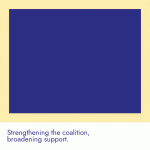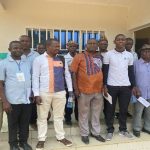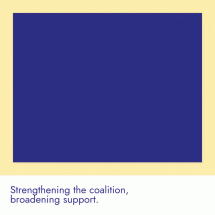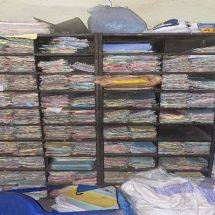On 12th November 2017, the 6th meeting of the Inter-agency and Expert Group on Sustainable Development Goal Indicators (IAEG-SDGs) reached a major decision to reclassify tenure security Indicator 1.4.2 from Tier III to II in Manama, Kingdom of Bahrain. This decision marks the beginning of a global journey to monitor tenure security for all, using comparable land indicators for globally comparable data. This decision followed a review by the IAEG-SDGs of progress made by the custodian agencies, UN-Habitat and World Bank, in the development of a robust, global methodology for monitoring the tenure security indicator 1.4.2, within the framework of SDGs. News of this decision was communicated by the IAEG-SDGs during its plenary session on 13th November, 2017 attended by representatives from countries, international and regional agencies and entities, and other stakeholders.
The IAEG-SDGs was established by the Statistical Commission at its 46th session to develop an indicator framework for the monitoring of the Goals and targets of the 2030 Agenda for sustainable development at the global level, and to support its implementation.
Indicator 1.4.2: “Proportion of total adult population with secure tenure rights to land, with legally recognized documentation and who perceive their rights to land as secure, by sex and by type of tenure”.
The proposed methodology for monitoring this indicator was developed through a rigorous and intensive consultation process involving the National Statistical Organisations (NSOs), National Land Agencies, data agencies (DHS, MICS, LSMS), regional statistics and land organisations, Civil Society Organisations and International Non-Governmental Organisations, private sector, the Global Donor Working Group on Land, UN agencies and other stakeholders.
The now approved methodology gives equal value for legally documented tenure rights and perception of tenure security. This will advance the paradigm shift that aims to ensure over 2 billion people living in urban informality and indigenous communities’ territories will have their rights documented, accounted and monitored for evidence-based policy decisions on the governance of their land.
Towards Tier 1 reclassification by 2019 through enhanced local action for data collection: Country capacity challenge for land data collection, analysis and reporting
The next milestone now is to have at least 50% of all countries in all regions collect data and report regularly on Indicator. 1.4.2, which is a requirement by IAEG-SDGs for Tier I classification. With the Tier II reclassification, Custodian agencies can now move with speed to support country data generation initiatives towards this milestone. This will sustainably enhance countries’ capacity to collect and track progress on tenure security and measure progress on SDG 1 on Poverty Eradication under Target 1.4.
Based on the findings of a capacity assessment of 17 countries conducted by GLII / GLTN and UN-Habitat on NSOs preparedness to report on Indicator 1.4.2, data collection and reporting at scale is feasible and needs to integrate essential questions in existing national survey conducted by NSOs, standardization of data collection and reporting protocols for administrative data is also required. Since survey and administrative data are complementary, every country will collect the two data sets to monitor progress on this indicator.
As co-custodian agencies, UN-Habitat and the World Bank have developed several capacity development and awareness raising materials to support NSOs and National Land Agencies to realize this objective. Capacity strengthening for national and regional agencies in data collection, especially for developing countries, is expected to ‘leap-frog’ their ability to generate data and regularly report progress on this indicator to the UN Statistical Commission and to the UN High Level Political Forum.
The funding challenge
The reclassification of Indicator 1.4.2 confirms the global acceptability of the proposed methodology for data collection, analysis and tracking of progress on tenure security at country level. This data will be generated and reported by the NSOs to the custodian agencies and UN Statistical Commission in collaboration with National Land Agencies and other stakeholders. The investment made by UN-Habitat and World Bank, the Global Donor Working Group on Land and GLTN through GLII with funding support from the Ministry of Foreign Affairs of the Netherlands, has not been in vain.
Technical and financial resources will be required to enable effective and efficient capacity building efforts at country level. While the reclassification decision is welcome, the lack of earmarked funding from to custodians and supporting entities like GLII is expected to challenge responsive planning for addressing capacity need from NSOs, National Land Agencies, CSOs and other stakeholders. Joint strategy for capacity strengthening for Indicators 1.4.2 and 5.a.1 are being explored by the custodians, in collaboration with UNFAO, as a way to promote harmonization of these indicators, foster synergy and apply a joint data collection questionnaire to generate survey data for these indicators. The joint approach to capacity building and data collection for these two indicators is yet to be explored, and will certainly be a costly venture.
Political goodwill and increased financial commitment from national governments to prioritize and support national efforts in land data generation and reporting will unlock great potential to achieve and surpass the 50% target of all countries by regions to achieve Tier I classification by end of 2019.
The role of private sector and donor community in supporting capacity development initiatives, data collection, and new data technology transfer, awareness raising and convening of national and regional consultative meetings for sharing best practices in monitoring tenure security will enhance the level of success. Promotion of sustainable and country-led data initiatives will be key in fostering learning and building a knowledge based to support such efforts.
The Civil Society Organizations are also expected to play their key role in advocacy, awareness and supporting local and national process for data generation by NSOs and National Land Agencies, while playing the watchdog’ role to ensure inclusivity, robustness of processes for data collection including gender mainstreaming; and that no one is left behind.
Role of GLII in Supporting and Coordinating Land Governance Monitoring including the SDGs

For GLII platform members and partners, reclassification of Indicator 1.4.2 from Tier III to II is a well won outcome from months of lobbying, advocacy, collaboration and intensive consultation. GLII platform members have fully supported and accompanied the custodian agencies in the development of the methodology for measuring tenure security, and view this reclassification as a great step in advancing GLII’s mission to achieve global monitoring of land governance at scale.
GLII’s work goes beyond the monitoring of land indicators in the SDGs to facilitate the integration of comprehensive and comparable land indicators for monitoring land governance at national, regional and global monitoring efforts and programmes by various players. GLII will continue to support country, regional and global capacity development initiatives on overall land governance monitoring, developing land indicators, methodology and data protocols needed to support land governance monitoring.
Submitted by: Everlyne Nairesiae, Coordinator, Global Land Indicators Initiative (GLII) , Land and GLTN Unit at UN-Habitat











